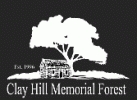|
Research at CHMF |
|
GUIDELINES FOR RESEARCH CHMF seeks to promote conservation by increasing public awareness of the aesthetic, recreational and economic importance of Kentucky's forests. CHMF is committed to the proposition that forests can be managed in ways that will allow their sustained use for all values man derives from them. We believe that our best hope to achieve sustainability lies in inclusive education supported by a strong foundation of research. So we welcome inquiries concerning the use of CHMF for educational or research purposes. GENERAL RESEARCH EMPHASES AT CHMF All research should relate to the mission statement of CHMF. We encourage research in all designated areas of CHMF. Projects should be compatible with the designated land-use of the area in which the research is to be conducted. Where appropriate, studies may be conducted at the population, community, or ecosystem level. We are particularly interested in studies which address biological inventory, long-term biomonitoring, and ecological studies including community analyses and comparative studies between the managed woodland and preserved forest. Projects deemed appropriate by the Research Committee of the CHMF Board of Advisors will be approved on a "first come/first serve" basis.RESTRICTIONS Collections of organisms from the nature preserve portions of CHMF must be approved by the Research Committee and may not be approved unless similar research cannot be conducted in the managed area. Use of toxicants (pesticides, herbicides) is prohibited except for specimen preservatives or in projects related to eradication of invasive species. In any case use of toxicants shall be approved by the Research Committee. RESEARCH PROPOSALS Researchers must submit a formal research proposal by December 15 of the year preceding the planned research. Proposals will be accepted at any time prior to this and will be reviewed as they are received. Proposals should be submitted electronically, preferably in Word, TXT, or RTF format. Proposals should be no longer than two typewritten pages and should include the following: 1. A project summary including a clear description of the project, project goals and objectives, and how the research relates to the mission of CHMF. 2. A brief description of methods and materials to be used including a project time frame, number and location of sample sites (a map may be included), collecting techniques, equipment used, etc. Plans for the disposition of collected specimens and treatment of voucher specimens should be clearly indicated. 3. A summary of expected outcomes. All proposals should be sent to: Richard K. Kessler. Questions related to the property or the proposal process should be addressed to Gordon K. Weddle
|
Published July 1997 revised 7 March 2018 © Clay Hill Memorial Forest 2006 |


